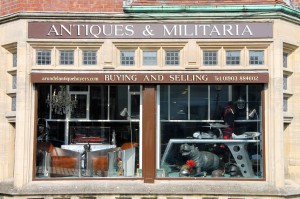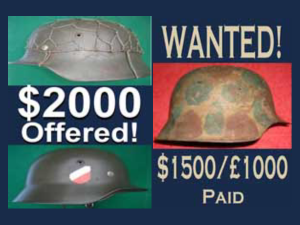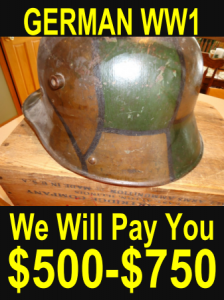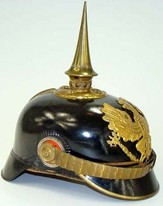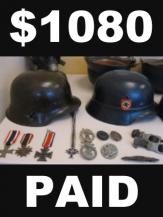
Uniforms, helmets, flags, belt buckles, medals.
German Helmets are
amoungst the most
prized incons with WW2 collectors.

$1000 is now being demanded for mint WW1 German Steel Helmets .WW2 Is Even More Interesting With Prices For M38 Paratrooper Lids Genuinely Selling For $7000 Against Optamistic Advertised Prices Of Up To $10.000?

As a Militaria dealer I have witnessed an increase in the volume of people collecting militaria .
Reasons for this phenomena include. Accessibility to product and the proliferation of a newer phenomenon Facebook collecting communities.
The popularity of recent and more realistic movies such as ” Dunkirk”” Saving Private Ryan” The “Band of Brothers” series together with dedicated history channels regularly running documentaries on modern conflicts .
The recent one-hundred year anniversary of World War I has inspired a new generation of enthusiasts .
In the U.K I find that many younger collectors have learned to identify types of guns through playing War Themed Video Games.
Whatever ignites the passion in “militaria” those interested in owning a piece of history are immediately faced with decisions:
What do I collect and how do I know it is real?
What to collect is mostly up to personal preference.
But typically how and what you collect will fall into the following categories:

